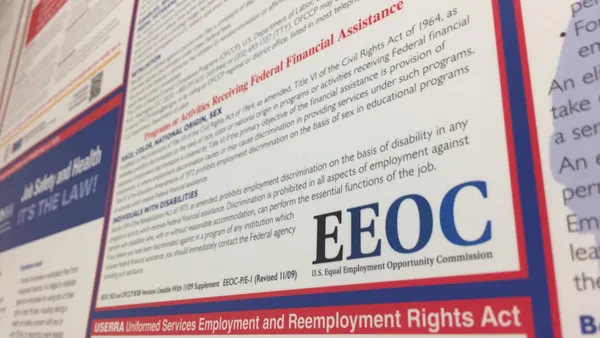Dive Brief:
- The 5th U.S. Circuit Court of Appeals partially overturned a lower court's ruling when it found that a worker's 16-day leave was part of the intermittent leave certified by his physician, rather than a portion of continuous leave. Because the leave was intermittent, International Paper Company violated the Family and Medical Leave Act by requiring the worker to obtain a doctor's note before returning to work, causing him to use one more absence than permitted, leading to his termination (Price v. International Paper Company, No. 21-30220 (5th Cir., March 10, 2022)).
- Prior to his termination, the worker took leave on three separate occasions. He attempted to return to work after his second round of leave but became sick and left work early for a medical appointment. The medical provider asked the company to provide "intermittent leave," and the employer approved the request.
- When the worker returned 16 days later, a manager told him he needed to go home until he had a medical release from his doctor. His absence caused him to violate the company's attendance policy, which allotted workers three absences every six months. Because the worker had already used his three days when he attempted to return to work, the company terminated him for violating the policy. The International Paper Company told HR Dive that it does not comment on pending litigation.
Dive Insight:
The worker claimed in a lawsuit that the paper company interfered with his FMLA rights when it terminated him. He also charged the company with retaliation. A district court sided with the employer on both counts, but the 5th Circuit overturned its ruling on the worker's first claim.
The 5th Circuit framed its analysis in the provisions of the FMLA. The act grants eligible workers 12 weeks of medical leave in a 12-month period — a right employers cannot interfere with. The FMLA makes room for two types of leave: continuous leave and intermittent leave. Its regulations do not specify what distinguishes the two; instead, regs "merely note" that the latter is "leave taken in separate blocks of time due to a single qualifying reason," the 5th Circuit wrote.
But the FMLA does note one difference between the types of leave that featured heavily in the unfolding of the worker's case against the paper company. The FMLA permits employers to require employees to bring a medical release when they return from continuous leave. They may not require this of employees returning from intermittent leave.
The district court concluded that the worker took continuous leave and ruled that the paper company had every right to ask for a doctor's note certifying his fitness for work. The 5th Circuit disagreed. When the worker sought his final round of FMLA leave, he provided a doctor's note requesting he have access to intermittent leave. Despite the company approving the request, it later argued that the worker's leave was continuous because it lasted longer than several days. But the 5th Circuit argued that regulations don't specify that a 16-day period can't be categorized as intermittent leave.
Because the worker was returning from intermittent leave, the company violated his rights when it blocked his return and terminated him according to its absence policy, the 5th Circuit concluded.
As exemplified in Price, FMLA isn't as straightforward as it may appear. A senior advisor with the U.S. Department of Labor recently reminded employers in a webinar that intermittent leave, midweek departures, holidays, and overtime can muddle HR's math in calculating when workers reach their 12 weeks. And, as many employers are painfully aware, requirements levied by the Americans with Disabilities Act can also complicate the question of how much leave workers are entitled to when they're out on leave.













